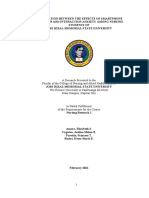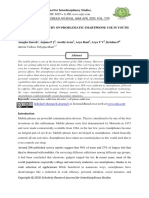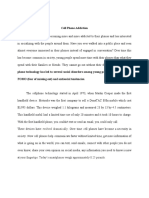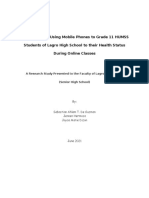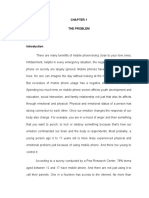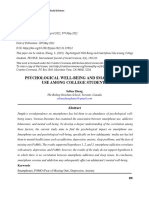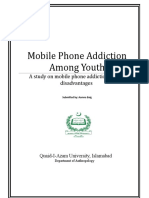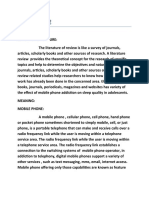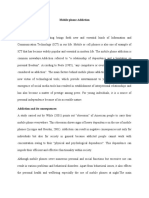0% found this document useful (0 votes)
63 views9 pagesMerrill Final Technology
The document discusses the issue of smartphone addiction, particularly among young adults, highlighting its negative effects on mental health, such as increased anxiety and dependence on devices. It emphasizes the lack of recognition of smartphone addiction as a legitimate problem due to the widespread acceptance of technology in society. The text also notes the challenges in diagnosing and treating this addiction, as well as the need for effective treatment options as smartphone usage continues to rise.
Uploaded by
api-559899076Copyright
© © All Rights Reserved
We take content rights seriously. If you suspect this is your content, claim it here.
Available Formats
Download as PDF, TXT or read online on Scribd
0% found this document useful (0 votes)
63 views9 pagesMerrill Final Technology
The document discusses the issue of smartphone addiction, particularly among young adults, highlighting its negative effects on mental health, such as increased anxiety and dependence on devices. It emphasizes the lack of recognition of smartphone addiction as a legitimate problem due to the widespread acceptance of technology in society. The text also notes the challenges in diagnosing and treating this addiction, as well as the need for effective treatment options as smartphone usage continues to rise.
Uploaded by
api-559899076Copyright
© © All Rights Reserved
We take content rights seriously. If you suspect this is your content, claim it here.
Available Formats
Download as PDF, TXT or read online on Scribd
/ 9



